‘Shooting’ for the Sharklab
We live in an age in which effective science communication is becoming more and more important. We also live in a visual world. Being the media manager for the Bimini Biological Field Station (or Shark Lab) has given me the unique opportunity to showcase the work being conducted by one of the world’s leading shark research stations. Through my imagery I aim to ensure that the general public gets a better understanding of the scientific work that is being carried out at the Shark Lab. As most of the people who are interested in the ocean and its marine life are not scientists who read scientific journals, my hope is that I can spark, or increase, interest in shark science and conservation through the Shark Lab’s different social media platforms.
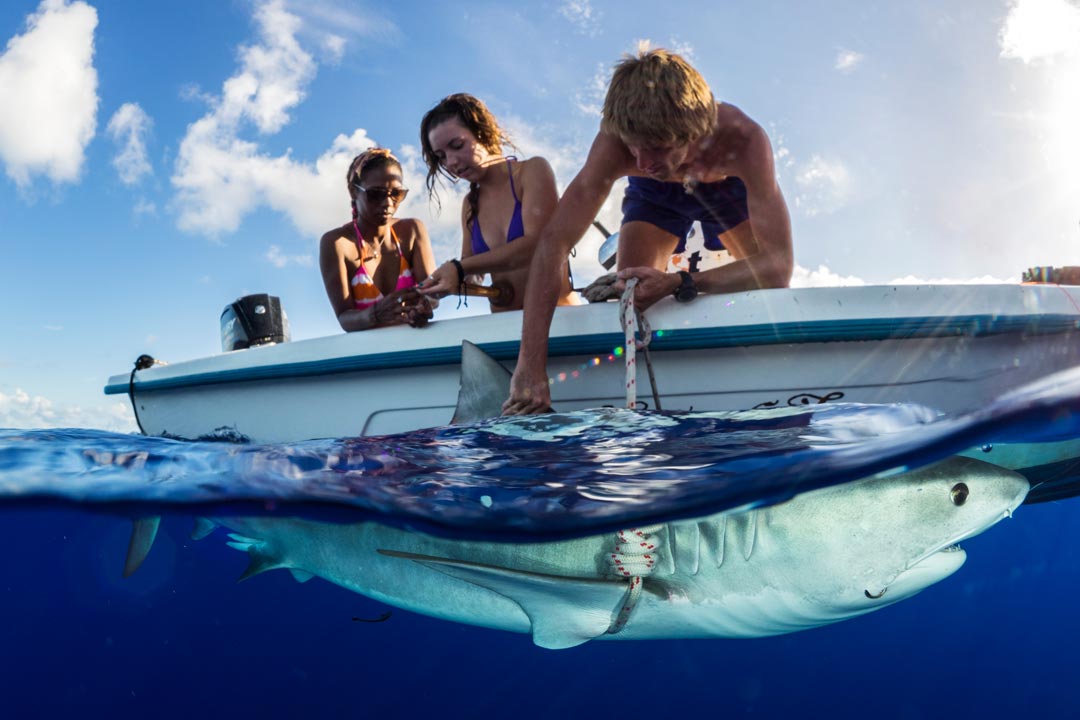
A work-up of a male tiger shark. This consists of tagging and measuring the shark and taking multiple samples, such as muscle for DNA (provides genetic information) and stable isotope analysis (provides information about the animal’s trophic position). Photo © Eugene Kitsios | Bimini Biological Field Station
I have always had a passion for wildlife photography, but never did I expect to be in the water among the ocean’s top predators. Each day at the Shark Lab is very different. One day I may be in the water alongside a 3.5-metre tiger shark, the next I’ll be free-diving with great hammerheads and the day after I could be photographing a southern stingray work-up. All the people working at the lab, whether PhD students, managers or volunteers, seem to share a common goal: to further our knowledge and create awareness of these often misunderstood animals. It is great to work with such passionate people and I am proud to be part of this team.
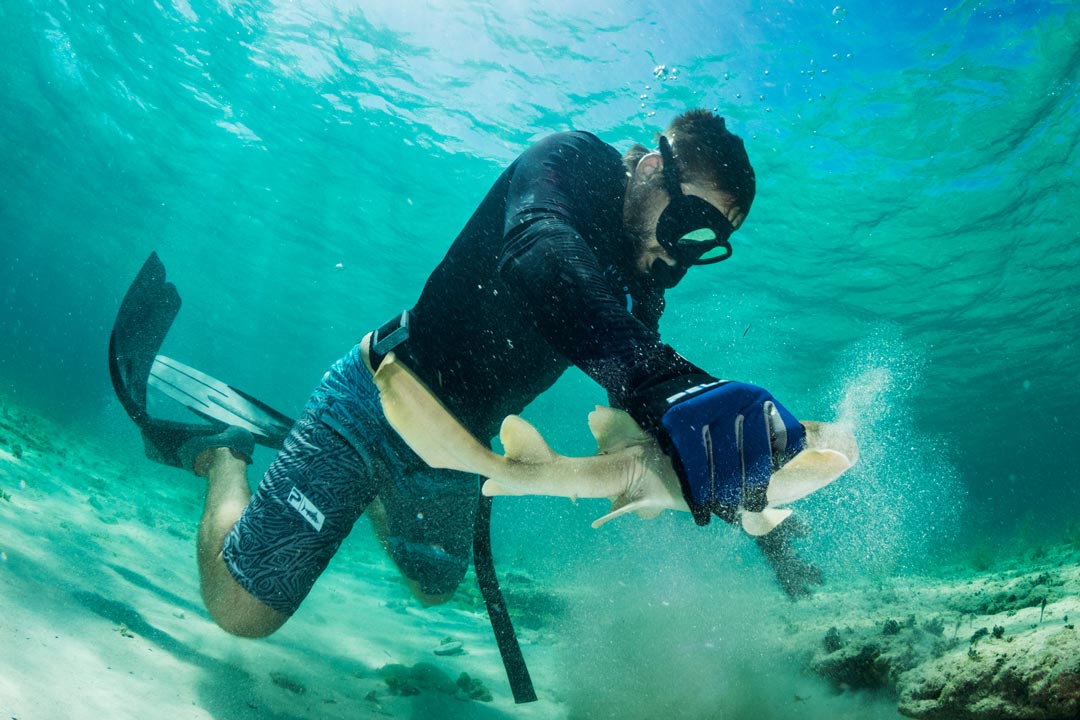
A juvenile nurse shark is caught by hand. As the Shark Lab catches many of these small sharks, it is hypothesised that Bimini serves as a nursery ground for this species. Photo © Eugene Kitsios | Bimini Biological Field Station
British primatologist Jane Goodall once said it best: ‘Only if we understand can we care. Only if we care will we help. Only if we help shall they be saved.’ It is my hope that my imagery will do just this: make people understand and care.
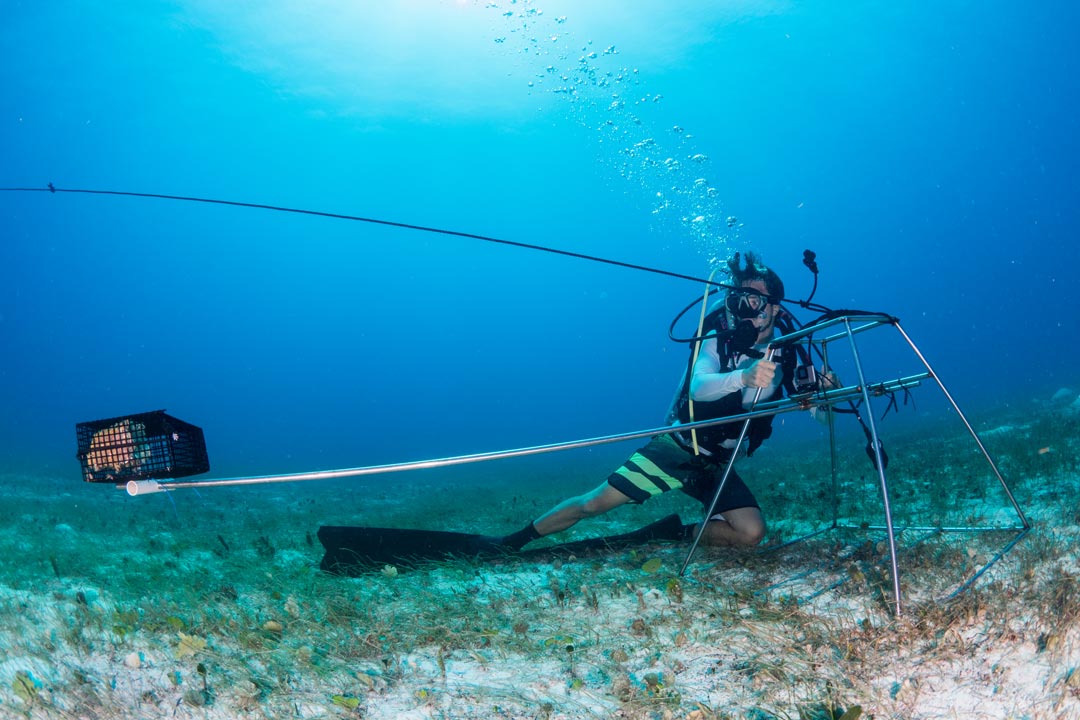
A Baited Remote Underwater Video System (BRUVS) frame is deployed on the sea floor, with a bait box and a small camera mounted on it. Through the video footage obtained by this non-invasive technique, the Shark Lab is able to get an idea of community assemblages and the distribution and abundance of the different species that roam the area. Photo © Eugene Kitsios | Bimini Biological Field Station
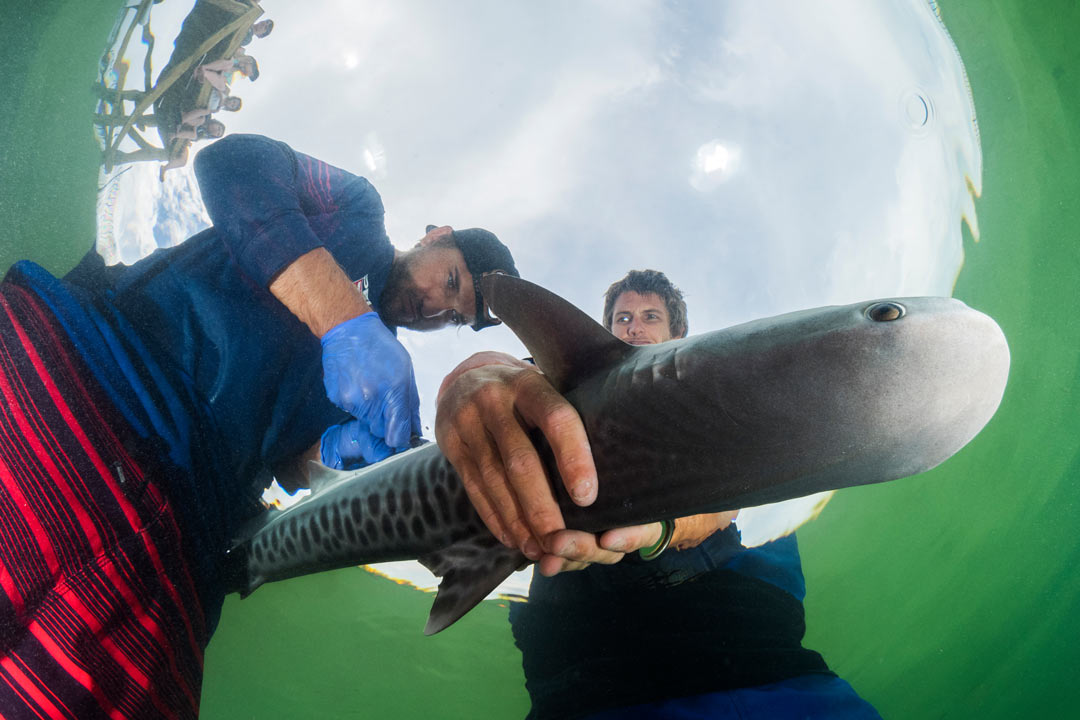
An acoustic transmitter is surgically implanted in a juvenile tiger shark. The transmitter will last for 10 years and will provide invaluable data regarding the shark’s movements and habitat use. Photo © Eugene Kitsios | Bimini Biological Field Station
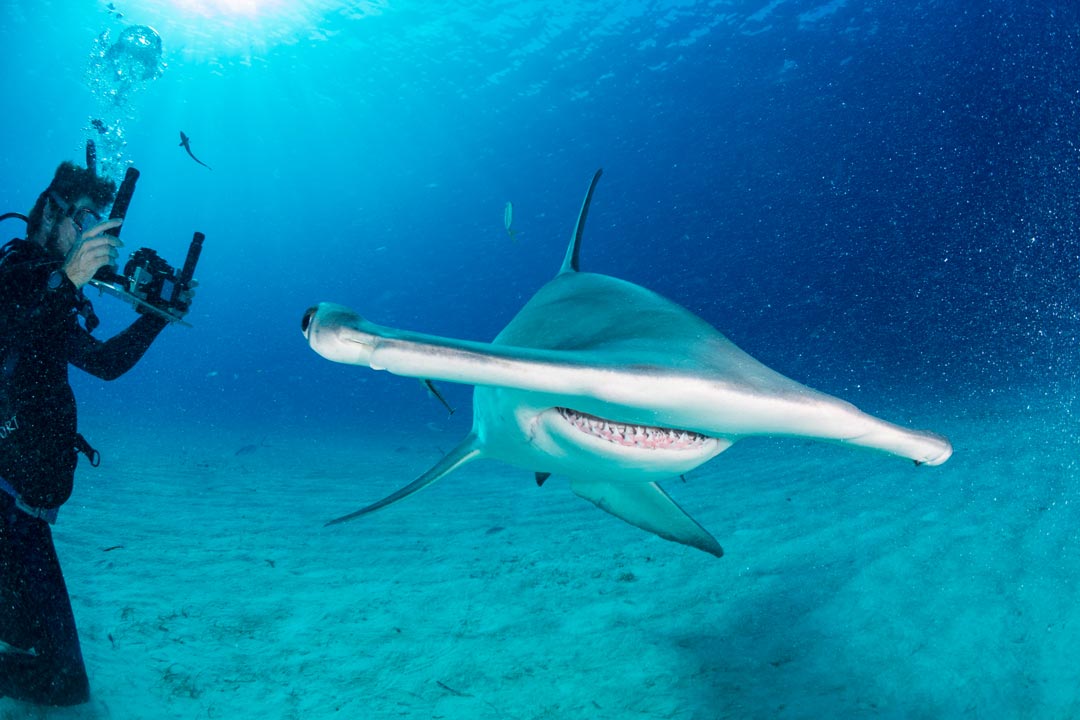
Two lasers of a known distance apart (20 centimeters) and a camera are pointed parallel to a great hammerhead shark. This is a non-invasive way to gauge accurately the length of an individual of sensitive and endangered species such as the great hammerhead. Photo © Eugene Kitsios | Bimini Biological Field Station
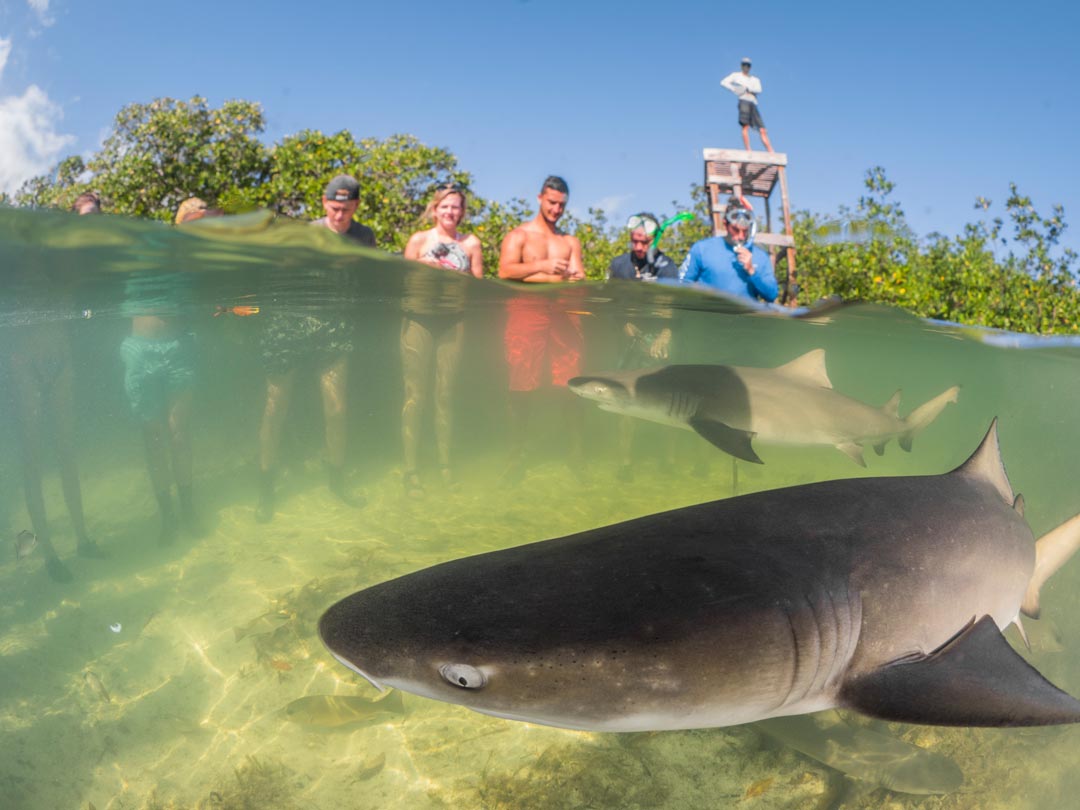
University students learn about the importance of mangrove habitat for juvenile lemon sharks. Mangroves not only serve as nursery habitats, but also provide shelter from potential predators, such as barracuda and larger sharks. Photo © Eugene Kitsios | Bimini Biological Field Station
To keep up to date with the Bimini Shark Lab’s exciting research projects, please follow us on Facebook, Instagram and Twitter.
